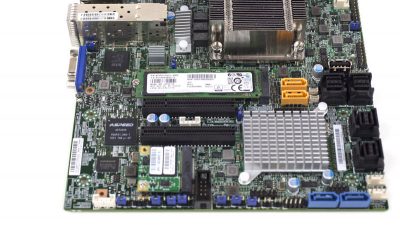Napp-it and OmniOS is a storage platform that utilizes ZFS in its (near) native environment, an OpenSolaris OS. The fact that it uses a proven enterprise file system and it is free means that it is extremely popular among IT professionals who are on constrained budgets. At STH we test hundreds of hardware combinations each year. From this experience, we are going to keep a running log of the best Napp-it and OmniOS hard drives. We are going to focus this guide on Napp-it and OmniOS servers with under 120 storage devices and will periodically update the listing.
Like most ZFS systems, the real speed comes from caching. ZFS is designed to make effective use of RAM and solid state drives for caching. ere our are our top picks for Napp-it and OmniOS L2ARC drives.
L2ARC Drives for napp-it and OmniOS
L2ARC devices are a tier of storage between your ARC (RAM) and disk storage pools for reads. At today’s prices, our advice is to just get a SSD. Given that 960GB SSDs with power loss protection are well under $300, our advice: get a data center oriented drive, used. You can also skip guides that suggest 120GB or 240GB drives. While you may not need that much space, performance on smaller capacity drives suffers. 400GB should be your minimum capacity. Here are our picks:

- Samsung PM951 m.2 NVMe or 950 EVO 512GB (under $200 on ebay)
- Toshiba XG3 512GB m.2 NVMe SSD ($200-240 on ebay)
- Intel DC S3610 400GB, 480GB (around $200 on ebay)
- Intel DC S3500 480GB, 600GB, 800GB ($160 to $300 on ebay)
- Samsung PM863 960GB ($235- 295 on ebay)
Realistically most SSDs will be fine.
The Toshiba and Samsung NVMe drives are cost effective NVMe drives. They do not have power loss protection but they are faster than three or more SATA SSDs. The Intel 750 NVMe SSD also is a great option but pricing tend to be higher and it is not available in a m.2 form factor. If you are using 1GbE networking, you can generally skip NVMe drives as you will be bottlenecked by network bandwidth instead. If you do not have a m.2 SSD slot in your system, other good options are the Intel 750 400GB 800GB or 1.2TB NVMe SSDs.
An Intel DC S3610 is overkill as are most drives on the list. They do use a faster controller than the Intel DC S3500 so for a de minimis premium, get the Intel DC S3610. The Intel DC S3500’s are still great drives and can be purchased for around $0.25/GB. Likewise, the Samsung PM863 drives are very popular with OEMs such as HPE and thus are extremely inexpensive. Given most L2ARC usage in this class of ZFS server is light, solid capacity is fine.
Given most L2ARC usage in this class of ZFS server, do not spend over $300-350 for a L2ARC drive. Used data center SSDs we have found to be both reliable and very low wear from actual use. See our work here: Used enterprise SSDs: Dissecting our production SSD population. Save money over consumer grade SSDs and get larger/ more drives with power loss protection. At the end of the day though, just about any SSD is a good option and there are folks who successfully use USB 3.0 thumb drives as L2ARC devices in ZFS NAS proof of concept systems.
You can see more of our napp-it and OmniOS Buyer’s Guides here.
